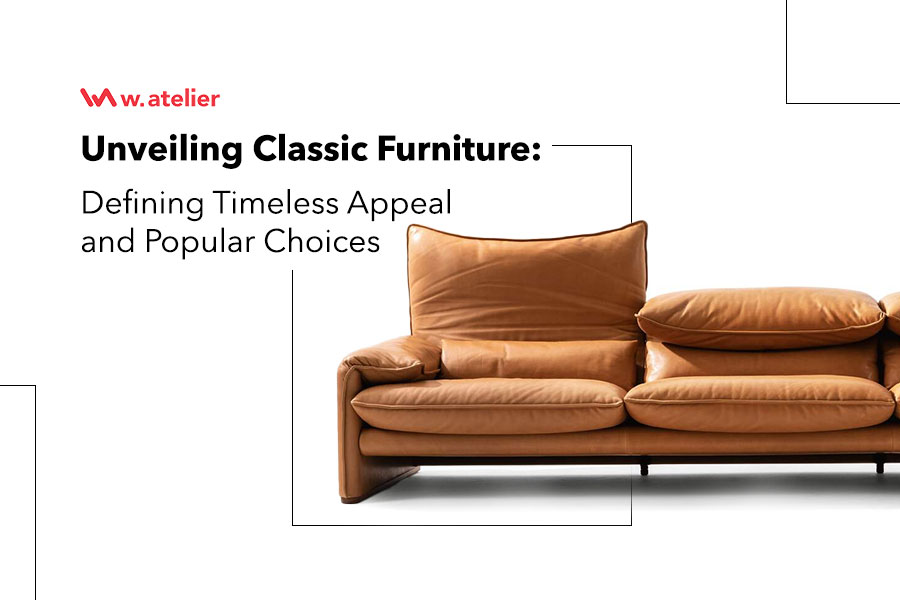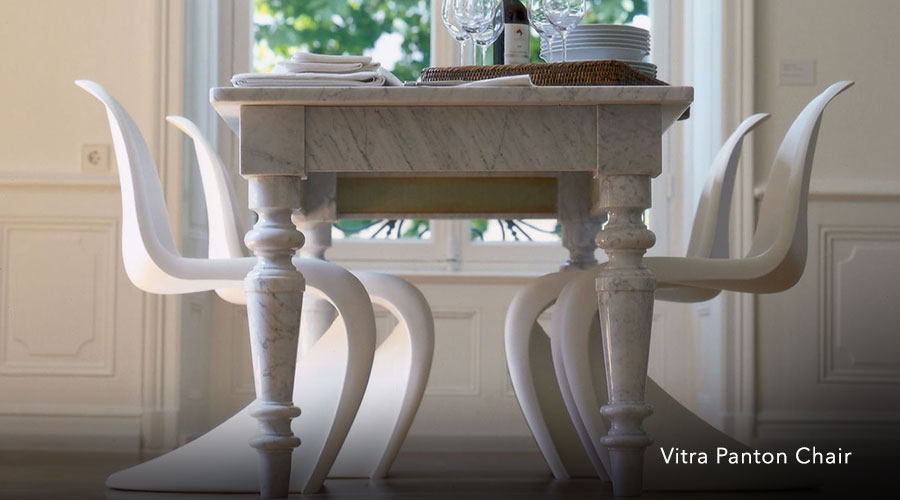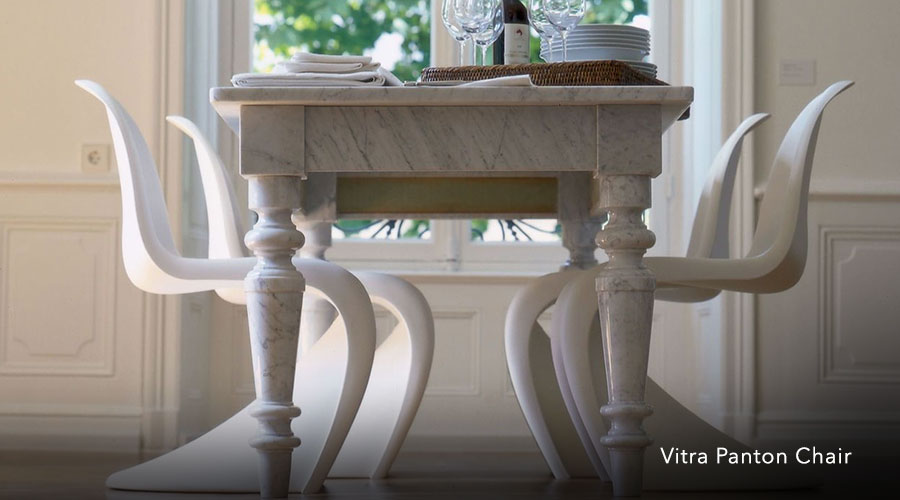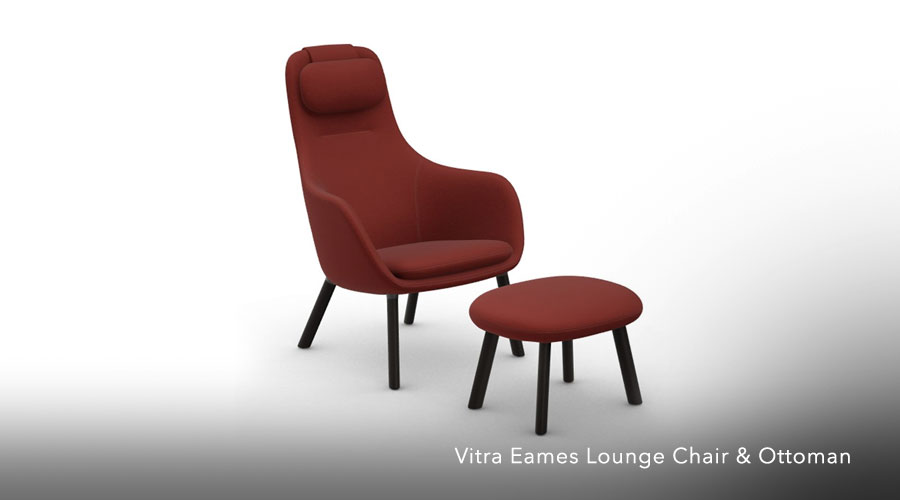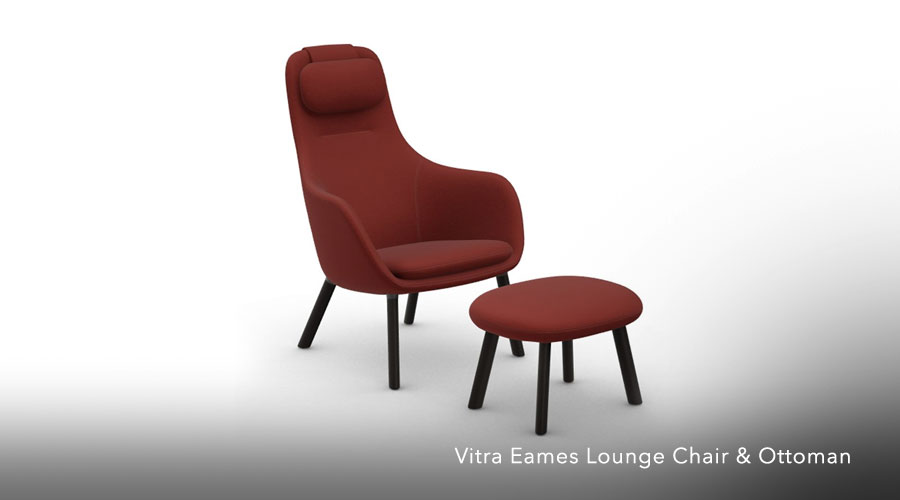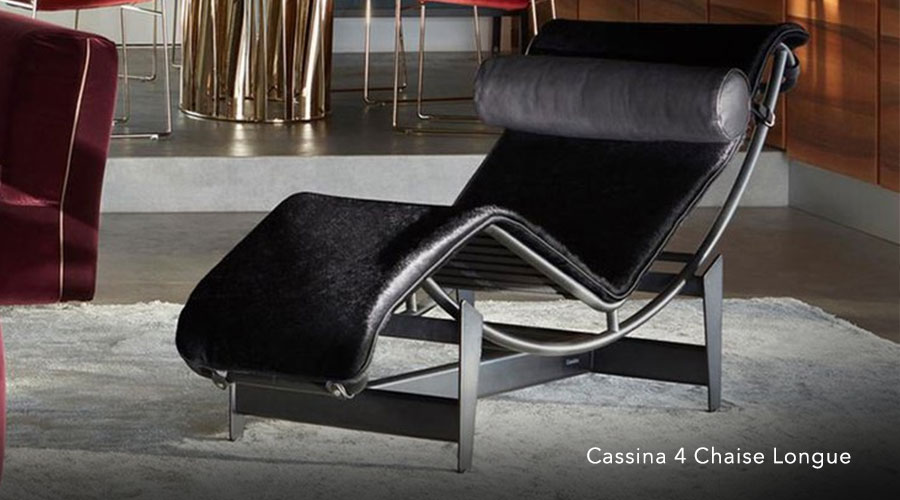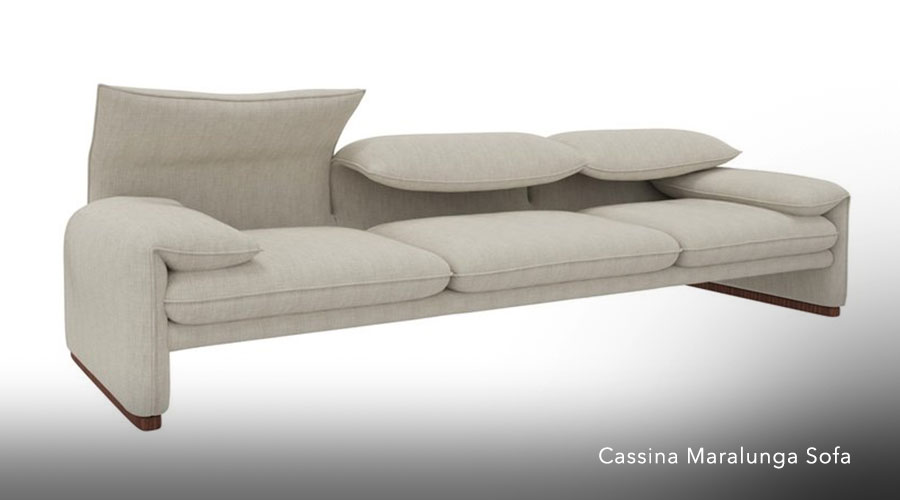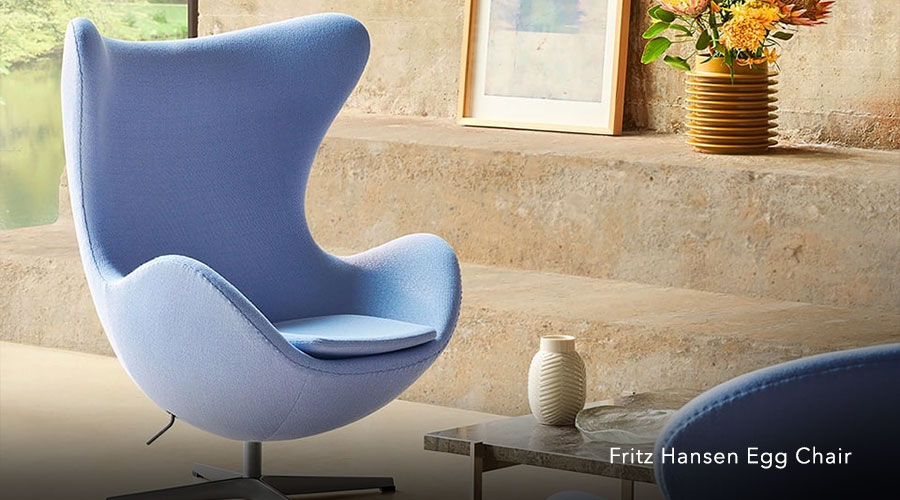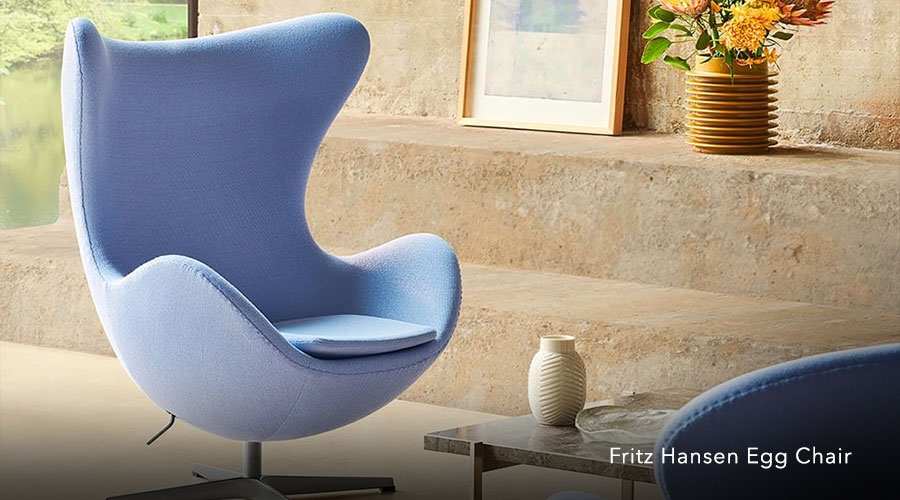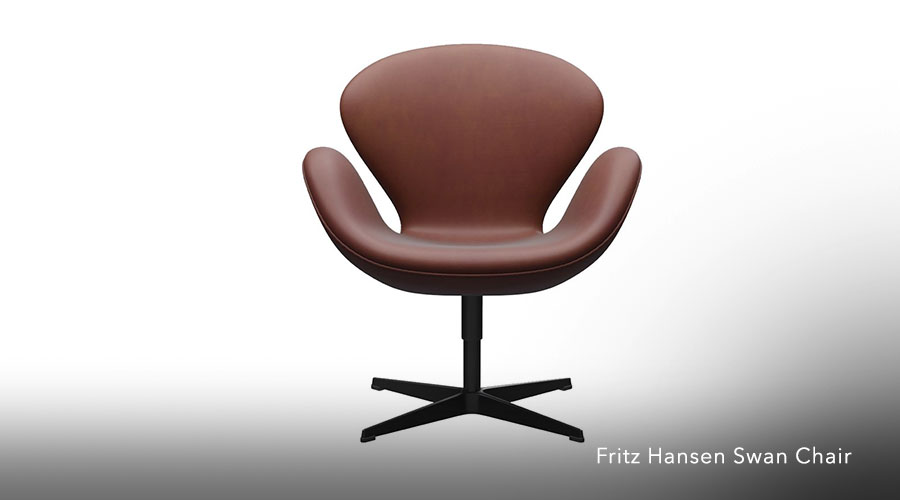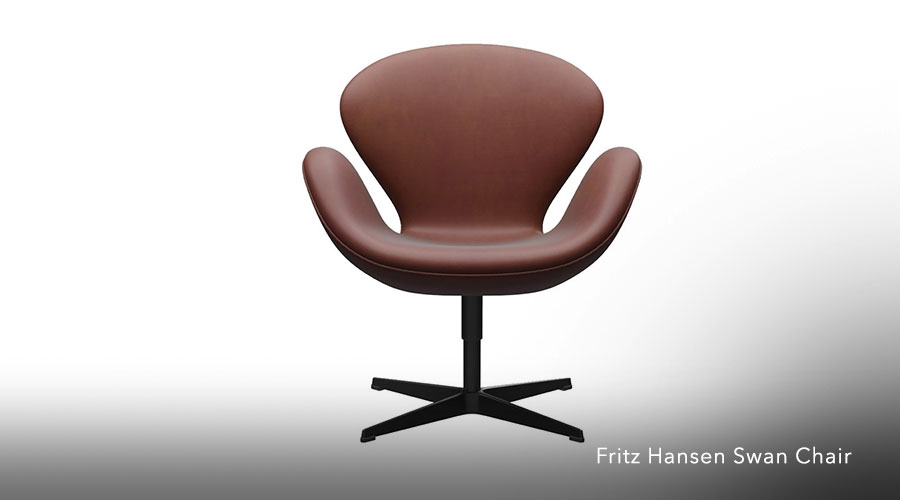In the ever-evolving world of interior design, where trends come and go, a category of furnishings remains steadfast and timeless – classic furniture.
Adorned with intricate details and exuding an enduring charm, classic furniture transcends eras to captivate the hearts of design enthusiasts across generations.
In this blog, we will delve into the essence of classic furniture, uncovering the elements contributing to its timeless appeal and some of the most iconic and popular choices that have left an indelible mark on design history.
Join us as we explore classic furniture's ability to evoke nostalgia while remaining relevant in today's design landscape. From its timeless design principles to the various categories of styles it encompasses, we shall embark on a journey that celebrates classic furniture's elegance and lasting appeal.
The Allure of Classic Furniture
Amidst the whirlwind of ever-changing design trends, classic furniture stands as an anchor, drawing us back to the elegance of eras gone by. Its ability to captivate us across generations lies in its profound connection to history and culture. Each piece tells a story, weaving a narrative of craftsmanship, artistry, and a rich heritage.
At the heart of classic furniture's enduring allure are the timeless design principles it embodies. While the world around us transforms rapidly, these principles remain steadfast, offering a sense of comfort and familiarity.
Classic pieces' symmetrical balance, intricate detailing, and harmonious proportions resonate with our innate sense of aesthetic harmony. These designs are not merely objects but a testament to the artisans who poured their skill and passion into creating works that would stand the test of time.
Types of Classic Furniture
The realm of classic furniture is a diverse tapestry woven from various styles, each with distinct characteristics and influences. Exploring these styles allows us to appreciate the nuanced differences that contribute to the broader category of "classic."
- Victorian Elegance: The Victorian style encapsulates an era of opulence and grandeur. Ornate carvings, rich fabrics, and dark polished woods are its hallmarks. Elaborate details and curvaceous forms define this style, evoking a sense of romance and sophistication.
- Regal Renaissance: Inspired by the rebirth of arts and culture, Renaissance-style furniture boasts intricate motifs and a focus on symmetry. This style celebrates the beauty of geometry and balance, with pieces often featuring arches, columns, and elaborate marquetry.
- Charming French Provincial: The French Provincial style exudes rustic elegance, drawing inspiration from the countryside. Whitewashed finishes, delicate carvings, and a mix of simple and intricate designs create a warm and inviting ambience.
- Timeless Colonial: Colonial-style furniture reflects the practicality and simplicity of early American craftsmanship. Sturdy woods like oak and maple are common, and straight lines, functional design, and a sense of understated beauty characterise pieces.
- Neoclassical Grace: Neoclassicism draws inspiration from ancient Greek and Roman aesthetics. Clean lines, restrained ornamentation, and a focus on symmetry define this style. The emphasis is on creating a sense of harmony and balance in every piece.
Each classic furniture style possesses distinctive characteristics that make it a unique representation of its era. The intricate carvings of Victorian furniture, the symmetrical geometry of Renaissance pieces, the rustic charm of French Provincial, the practicality of Colonial designs, and the timeless grace of Neoclassical elements all contribute to the diverse tapestry of classic furniture.
Materials That Define Classic Furniture
Classic furniture owes a significant part of its enduring charm to the materials from which it is crafted. These materials contribute to the aesthetic appeal of the pieces and play a crucial role in their longevity and timelessness.
Wood
Wood is the backbone of classic furniture. From the rich mahogany of Victorian pieces to the elegant cherry of Georgian designs, wood brings warmth, texture, and durability to the forefront. The intricate carvings and fine detailing that define classic styles are made possible by the malleability of wood and the skilled hands of artisans.
Leather
Leather upholstery is a hallmark of luxury and sophistication in classic furniture. Often used in seating and accent pieces, leather adds a tactile element that exudes comfort and elegance. The patina that develops over time enhances the character of the furniture, imbuing it with a sense of history.
Fabric
Fabric upholstery softens the lines of classic furniture and introduces a cosy element. From rich tapestries to intricate brocades, fabric choices reflect the era's style. Floral motifs, damasks, and other intricate patterns are often associated with classic designs, evoking a sense of nostalgia and timelessness.
Metals
Brass, bronze, and wrought iron accentuate classic furniture. They appear in hardware, decorative accents, and even structural elements. The contrast between the solid wood and the gleam of metal adds depth and visual interest to the pieces.
These materials work in tandem to create furniture that not only pleases the eye but also withstands the test of time. Wood quality ensures durability, while leather and fabric upholstery contribute to comfort and aesthetic appeal, while the careful selection of metals enhances both the design and structural integrity.
Contemporary Interiors with Classic Furniture
The fusion of classic furniture with modern interiors is a testament to these pieces' versatility and enduring appeal. Contemporary spaces embrace clean lines, minimalism, and an open layout.
Classic furniture, with its intricate detailing and ornate features, might seem at odds with a modern aesthetic. However, juxtaposing the two styles produces a harmonious and visually striking composition.
Tips for Blending Classic and Contemporary Elements
✔️ Focus on Balance: Strive for a balance between classic and contemporary elements. For instance, pair a sleek, modern sofa with a classic wooden coffee table or an ornate mirror.
✔️ Neutral Palette: Use a neutral colour palette as a unifying factor. Neutral hues provide a cohesive backdrop for combining diverse styles.
✔️ Statement Pieces: Let classic furniture serve as statement pieces. A Victorian chaise lounge or a Georgian secretary desk can be the focal point of a room.
✔️ Subtle Accents: Incorporate classic details as subtle accents. It could be through decorative moulding, upholstered chairs with traditional patterns, or vintage-inspired lighting.
✔️ Open Space: Embrace the spaciousness of contemporary design to let classic pieces breathe and stand out.
✔️ Contrast in Texture: Play with textures – combine the smoothness of modern surfaces with the intricate textures of classic furniture.
✔️ Natural Light: Allow ample natural light to highlight the intricate details of classic furniture while keeping the space fresh.
As we skillfully integrate classic pieces into contemporary interiors, we pay homage to the past while creating functional and visually captivating spaces. The art lies in discovering the perfect balance, resulting in a harmonious coexistence of two distinct design worlds.
Iconic Classic Furniture Pieces
Throughout the history of design, certain furniture pieces have transcended time and trends to become true icons of style and innovation.
These pieces define their respective eras and continue to inspire and captivate us today. Let's take a closer look at some of these legendary pieces.
Vitra Panton Chair
Designed by Danish architect and designer Verner Panton in 1959, the Panton Chair is a true icon of modern furniture design. Its curvaceous, fluid form and innovative use of moulded plastic were groundbreaking at the time. The chair's sculptural and colourful appearance symbolises the mid-century design movement.
Vitra Eames Lounge Chair & Ottoman
The Vitra HAL Lounge Chair and Ottoman, designed by the renowned Jasper Morrison, encapsulate a harmonious blend of comfort and contemporary aesthetics. Morrison's minimalistic yet functional approach is evident in the HAL Lounge Chair's organic silhouette, moulded to provide exceptional seating comfort. Its fluid lines and ergonomic design create a sense of relaxation and tranquillity, allowing users to unwind effortlessly. The accompanying ottoman complements the chair's design language, offering a seamless extension for comfort and repose.
Cassina 4 Chaise Longue
Designed by Le Corbusier, Pierre Jeanneret, and Charlotte Perriand in the 1920s, the Cassina LC4 Chaise Longue symbolises functional elegance. Its adjustable reclining position and simple, linear structure reflect modernist design principles while offering exceptional comfort.
Cassina Maralunga Sofa
The Maralunga Sofa, also designed by Vico Magistretti for Cassina, is celebrated for its innovative backrest design. An international bestseller, this sofa redefines relaxation with a movable headrest that can be adjusted for optimal comfort. Its clean lines and inviting form make it a classic choice for any interior.
Fritz Hansen Egg Chair
Arne Jacobsen's Egg Chair, introduced in 1958, is a masterpiece of sculptural design. The chair's organic shape and cocoon-like form create a sense of privacy and comfort. The Egg Chair's influence on interior design endures, making it an emblem of mid-century modern style.
Fritz Hansen Swan Chair
Also designed by Arne Jacobsen, the Swan Chair (1958) shares the same design sensibilities as the Egg Chair. Its graceful curves and swivel base make it a distinctive piece that brings elegance to any space.
These iconic classic furniture pieces are more than just functional items; they are works of art that continue to shape how we think about design and interiors. Their enduring appeal speaks to their timeless beauty and the innovative thinking of the designers who created them.
Whether gracing a mid-century modern living room or adding a touch of sophistication to a contemporary space, these pieces stand as testaments to the power of exceptional design.
Choosing the Perfect Classic Furniture for Your Space
Selecting classic furniture for your home is an exciting venture that involves harmonising your style with the timeless elegance of traditional design. To ensure that your choices both elevate your space and resonate with your lifestyle, consider the following factors:
Space and Proportion: Begin by evaluating the room's dimensions where the furniture will be placed. Classic furniture often has a strong presence, so choosing pieces well-suited for the space is crucial. Consider the furniture's height, width, and depth concerning the room's layout.
Style and Aesthetic: Classic furniture encompasses various types, from ornate Victorian designs to the clean lines of mid-century modern pieces. Identify the style that aligns with your preferences and complements your existing décor. The goal is for the furniture to blend seamlessly with your interior.
Functionality: Consider how you intend to use the furniture. Functionality is vital, whether it's for seating, storage, or display. Pieces that offer hidden storage or versatile features can add practicality to their aesthetic appeal.
Quality and Craftsmanship: Investing in well-crafted furniture pays off in the long run. Classic furniture is often characterised by its exceptional craftsmanship and attention to detail. Inspect the quality of materials, joinery, and finishes to ensure the pieces are durable and built to age gracefully.
Materials and Upholstery: The choice of materials and upholstery significantly impacts classic furniture's overall look and feel. Opt for materials that align with your preferences and lifestyle. Consider factors such as the durability of the fabric or leather and the maintenance required.
Colour Palette: Classic furniture can be found in various wood finishes, fabrics, and colours. Choose colours that complement your existing palette or provide a harmonious contrast. While neutral tones are versatile and timeless, don't hesitate to introduce pops of colour if they resonate with your design vision.
Comfort: While aesthetics are essential, convenience should not be compromised. If the furniture is intended for seating, test its comfort level. Sit on chairs and sofas, and assess whether the piece offers the support and relaxation you desire.
Longevity and Timelessness: Classic furniture is designed to withstand the test of time. Choose pieces that possess a timeless appeal rather than being driven by fleeting trends. The goal is to have furniture that remains stylish and elegant for years.
Personal Connection: Lastly, select pieces with a personal connection to you. Classic furniture often carries a sense of history and tradition. Choose items that evoke emotions and align with your design sensibilities.
In essence, selecting the perfect classic furniture involves a thoughtful equilibrium between style, functionality, and personal connection. Considering these factors can help you curate a collection of classic pieces that elevate your home and tell a story of enduring beauty and sophistication.
As we've journeyed through the intricacies of traditional styles, iconic pieces, and the art of selection, it becomes clear that classic furniture goes beyond mere furnishings – it encapsulates history, craftsmanship, and an everlasting connection to beauty.
In a world where design landscapes are in constant flux, the ability of classic furniture to seamlessly integrate into modern interiors is nothing short of remarkable. The answer lies in a balance between classic and contemporary elements, creating nostalgic and fresh spaces that are at once comforting and refreshing.
If you're ready to bring the elegance of classic furniture into your own space, look no further than W Atelier Singapore. From iconic designs that have shaped generations to contemporary interpretations of traditional styles, W Atelier offers a range of choices to suit your personal preferences and design aspirations.
Visit us today or browse our collection to explore a world where classic furniture finds its place in the tapestry of your unique interior.


